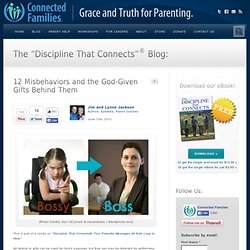

10 Rules for Students and Teachers Popularized by John Cage - Avant-garde composer John Cage started out as a disciple of Arnold Schoenberg.

He greatly looked up to the exiled Austrian as a model of how a true artist ought to live. Cage, in turn, inspired generations of artists and composers both through his work – which incorporated elements of chance into his music – and through his teaching. One of those whom he inspired was Sister Corita Kent. An unlikely fixture in the Los Angeles art scene, the nun was an instructor at Immaculate Heart College and a celebrated artist who considered Saul Bass, Buckminster Fuller and Cage to be personal friends. In 1968, she crafted the lovely, touching Ten Rules for Students and Teachers for a class project. Via Gotham Writers Related Content: Give 'em hell — chakrabot: justcallmesushi: "We’re learning a... True Grit: The Best Measure of Success and How to Teach It. Can you predict academic success or whether a child will graduate?

You can, but not how you might think. When psychologist Angela Duckworth studied people in various challenging situations, including National Spelling Bee participants, rookie teachers in tough neighborhoods, and West Point cadets, she found: One characteristic emerged as a significant predictor of success. And it wasn't social intelligence. It wasn't good looks, physical health, and it wasn't IQ. Why is Grit So Important? Using the Grit Scale that Duckworth developed with Chris Peterson, they found that grit is a better indicator of GPA and graduation rates. Add to this the findings (from Bowen, Chingos and McPherson's Crossing the Finish Line) that high school grades have a more predictive value of college success than standardized tests, and you may just see a shift from standardized test scores to high school GPA by some college admissions officers.
What is Grit? Can Grit be Taught? 1. 2. 3. 4. 5. 6. 7. An Amazing Village Designed Just For People With Dementia. Low-Income Schools See Big Benefits in Teaching Mindfulness. Teaching Strategies On his first day teaching at Coronado Elementary School in Richmond, Calif., students threw rocks at Jean-Gabrielle Larochette, pretending he was a police officer.

He spent fifteen minutes of every class calming down a handful of kids in this low-income-neighborhood public school who wouldn’t follow directions or behave. Larochette began practicing meditation and mindfulness to cope with his own stresses of teaching and supporting traumatized kids. He believed the breathing techniques that helped calm his fears might work for his students too, so he founded the Mindful Life Project.
Accredited Neurofeedback Certification Didactic Programs - Biofeedback Certification International Alliance. The following programs are accredited to provide 36 hours of education to fulfill the didactic requirement toward BCIA Certification.

Many of the training programs listed below are accredited by a national professional organization such as the APA. Please visit with each provider to see what accreditations each program carries if this is important to you when making your course selection. You are required to submit a program evaluation within 30 days of the completion of the course in order to get didactic credit toward certification. All information will be summarized and shared with the specific training provider with no link to a specific person. United States: Kids Involved in Bullying Grow Up To Be Poorer, Sicker Adults : Shots - Health News. 12 Misbehaviors & the God-Given Gifts Behind Them - Connected Families. [Photo Credits: Dori OConnell & claudiobaba | iStockphoto.com] This is part of a series on “Discipline That Connects®: Four Powerful Messages All Kids Long to Hear”.

All talents or gifts can be used for God’s purposes, but they can also be distorted by selfishness and sin and used to serve misbehavior. When this happens, the gift is still present, but it’s gone awry. To punish the misbehavior without affirming the talent behind it may both reinforce the child’s identification with the sin (I’m bad!) And stifle or weaken the talent’s use in honorable ways. To help you spot your child’s “gifts gone awry”, here are some examples of common misbehaviors and some gifts/talents that tend to drive them.
Arguing/Backtalk → Gift: Honesty, Strong feelings/opinions, Confidence (Research has shown that argumentative children are less likely to lie or be deceitful. Remember — one of the most critical times for us to affirm our children’s talents is when they misbehave. School Hopes Talking It Out Keeps Kids From Dropping Out. Out-of-school suspensions are on the rise across the country, a troubling statistic when you consider being suspended just once ups a student's chances of dropping out entirely.

That's why many districts are hoping to keep kids in school by trying an alternative to suspension. The "conflict-resolution room" at Ypsilanti High School in Michigan is quiet and sparse — just a small couch, some chairs and a plant. For decoration there are a few homemade posters with drawings of shooting stars and signs with slogans like "Together we can! " and "Think before you speak. " It's where students go when they're on the verge of being suspended. Solving Problems Collaboratively: The Ross Greene Approach.
Working with children when they are at their worst.